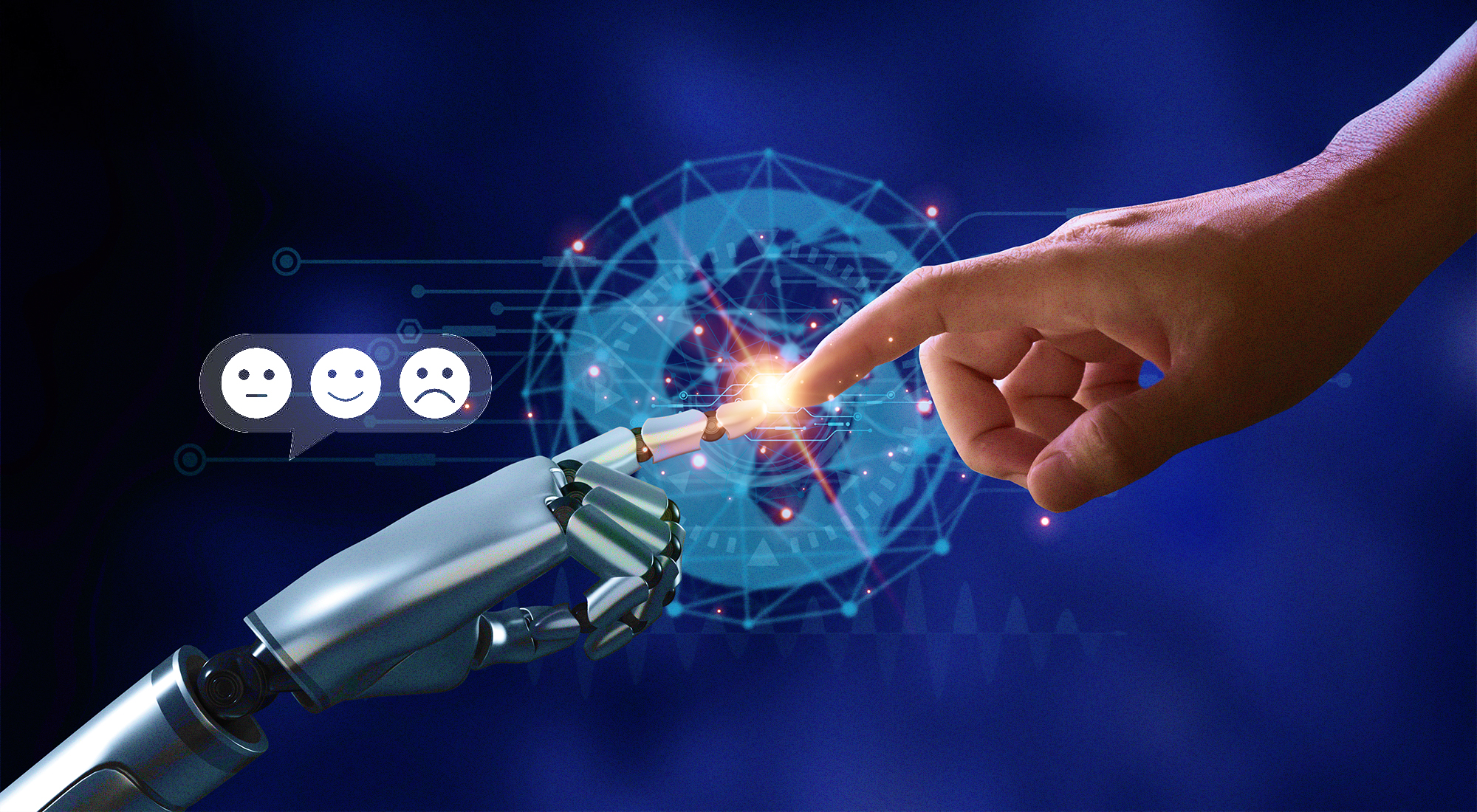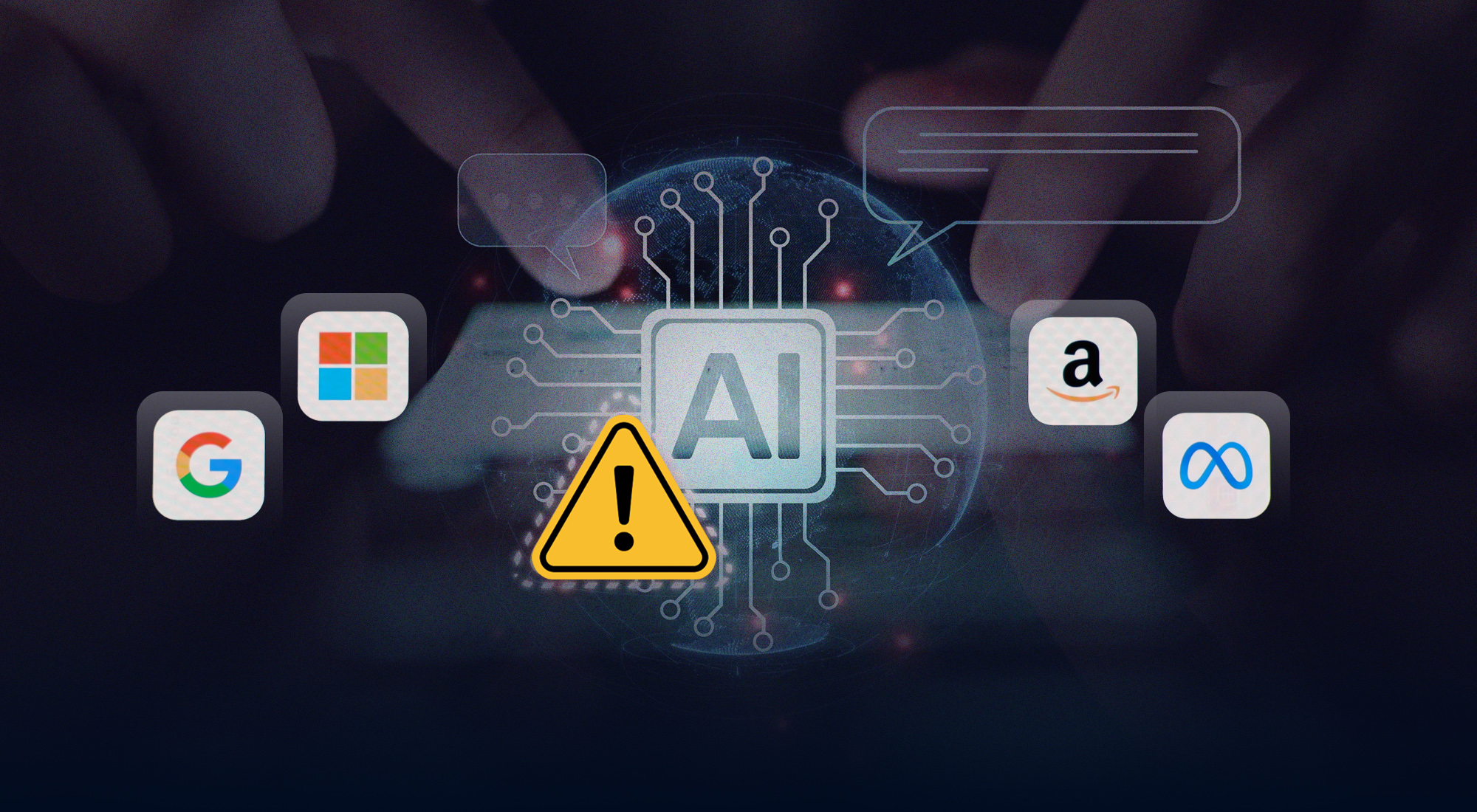The rapid advancement of artificial intelligence (AI) has revolutionized human-machine interaction, yet a crucial challenge remains—making these interactions more natural and emotionally engaging. Emotion AI, or affective computing, seeks to address this gap by enabling machines to recognize, interpret, and respond to human emotions in ways that mirror real-life communication. Through machine learning (ML) and advanced algorithms, AI can analyze facial expressions, vocal tones, and physiological signals to decode emotional states, enhancing user engagement and creating more intuitive interactions.
By integrating emotional intelligence, AI systems can foster deeper connections and influence decision-making by responding more empathetically to human emotions. However, achieving emotionally intelligent AI is not without challenges, including ethical concerns, the complexity of human emotions, and the risk of misinterpretation. Overcoming these obstacles is key to unlocking emotion AI’s full potential, ensuring systems that are not only adaptive and responsive but also ethically sound and capable of fostering meaningful engagement.
The Role of Emotion Recognition in Human-Machine Interaction
How does emotion recognition enable more natural interactions between humans and machines?
Emotion recognition in machines enables more natural interactions by closely aligning with how humans process and express emotions, thereby enhancing the overall interaction experience.[1] The integration of multiple emotion recognition techniques—such as text analysis, facial expression recognition, and voice tone assessment—enables machines to detect and interpret human emotions with greater accuracy, allowing for more intuitive and responsive interactions.[2] This multifaceted approach fosters a deeper understanding of user emotions, which is crucial for machines to tailor their responses and create a more personalized interaction experience.[3]
As a result, machines can simulate a human-like ability to recognize and express affection, which is a cornerstone of natural interactions.[4] By doing so, emotion recognition not only boosts the machine’s decision-making capabilities in line with human emotional states but also allows for more empathetic and engaging user experiences.[5], [6] The ability of machines to respond with affective expressions, such as through animations or haptic feedback, further enriches these interactions, making them feel more organic and human-like.[7] Consequently, these advancements in emotion recognition and response systems are pivotal in developing more empathetic and effective human-machine communication, emphasizing the need for continuous innovation and integration of sophisticated emotion recognition technologies.
What technologies are currently used for emotion recognition in AI systems?
Emotion recognition technologies in AI systems leverage multiple data sources to interpret and respond to human emotions, significantly enhancing the interaction between computers and humans. Visual data, such as facial expressions, remains a primary input for AI systems, as they are adept at recognizing and interpreting emotions through facial cues.[8], [9] Audio data, including voice analysis, plays a critical role in identifying emotions based on the tone and inflection of spoken words, providing another dimension to the emotion recognition process.[10], [11]
Additionally, physiological data, such as biometrics and body temperature, are integrated into algorithms to accurately assess emotional states, further enriching the data pool available for emotion analysis.[12], [13] These multifaceted approaches allow AI systems to not only recognize overt expressions of emotion but also to infer subtle emotional cues from a combination of visual, auditory, and physiological signals, thereby improving decision-making processes in affective computing scenarios. As technology evolves, continuous adjustments and enhancements are necessary to address inherent limitations and ensure ethical compliance, particularly in sensitive domains like the workplace where the impact on employment and livelihoods can be profound.[14], [15]
How do emotion recognition capabilities influence user satisfaction and engagement?
The integration of emotion recognition capabilities into user interfaces significantly enhances user satisfaction and engagement by providing a more personalized and intuitive experience. This is particularly impactful in applications designed for children with Autism Spectrum Disorder (ASD), where traditional games and software often necessitate the presence of a therapist or caregiver for effective interaction.[16] By incorporating automatic emotion recognition technologies, these applications can offer a more natural interaction, allowing the system to adapt to the emotional state of the user, which is crucial for maintaining engagement.[17] Furthermore, the ability of emotion recognition to detect and respond to user emotions in real-time presents a powerful tool in human-computer interaction, directly influencing user satisfaction by tailoring the product’s behavior to meet the individual needs of users.[18] This not only fosters a sense of independence and personalization but also contributes to the overall well-being and satisfaction of users, as they feel understood and catered to by the technology. Therefore, leveraging emotion recognition in interactive applications not only revolutionizes user experience but also demands continuous advancements and refinements in these systems to address current technical limitations and maximize their potential impact on user satisfaction and engagement.
The Integration of Emotional Intelligence in AI Systems
What are the key components of emotional intelligence that can be integrated into AI?
A key component of integrating emotional intelligence (EI) into AI is developing the technology’s ability to recognize and appropriately respond to human emotions. Emotional awareness, a cornerstone of EI, involves the capacity to identify emotions in oneself and others, which can be enhanced through AI and ML applications.[19], [20] This is critical for creating AI systems that can engage in emotionally intelligent interactions, fostering more empathetic digital communications.[21] One of the technological advancements aiding this process is sentiment analysis, which contributes to understanding and interpreting human emotions, thereby integrating empathy within AI applications.[22]
However, a significant challenge in this integration is ensuring that AI can understand the deeper context and nuances of emotions, which are inherently complex and influenced by multiple factors.[23] Addressing these complexities is crucial for AI development, as it must aim to replicate genuine human empathy and understanding in its interactions. Furthermore, the ethical implications of such integrations must be considered, as biases in AI systems could lead to misinterpretations and inappropriate responses. Therefore, the development of emotionally intelligent AI requires a balanced approach that combines technological advancements with a deep understanding of human emotional dynamics, ensuring that AI systems can interact with users in a truly empathetic and contextually aware manner.
How does emotional intelligence impact the decision-making processes of AI systems?
Building on the benefits of emotion recognition, incorporating emotional intelligence into AI decision support systems (AI-DSS) poses significant implications for user agency in decision-making processes. While the ability of emotionally capable AI-DSS to tailor recommendations to users’ emotional states can lead to more personalized interactions, it also raises concerns about diminishing individual autonomy.[24] The practice of nudging users toward specific decisions, enabled by these emotionally aware systems, introduces ethical dilemmas due to its potentially manipulative nature.[25] This heightened manipulation risk can deter users from questioning AI-generated advice, potentially leading to uncritical acceptance of recommendations.[26] As emotionally capable AI-DSS continues to evolve, it becomes imperative to engage in broad social discourse to address these ethical challenges and to develop measures that safeguard user autonomy and trust.[27] Without such measures, the erosion of decision-making agency may become an increasingly pressing issue, necessitating careful consideration of the balance between enhancing decision-making processes and preserving individual freedom.[28]
What are the potential challenges in developing AI systems with emotional intelligence?
Developing AI systems with emotional intelligence poses several potential challenges that span across technical, ethical, and educational domains. One of the foremost issues lies in the automatic detection and classification of users’ emotional reactions, which is crucial for affective computing applications.[29] This challenge is compounded by the inherent biases that may be present in AI algorithms, which can distort the effectiveness of emotional intelligence applications. Such biases may arise from the data used to train these systems, potentially leading to inaccurate or unfair outcomes.[30] Moreover, ethical and privacy concerns regarding data collection further complicate the development of emotionally intelligent AI. The data required for these systems often include sensitive personal information, necessitating stringent measures to ensure privacy and ethical use.[31] In educational contexts, these challenges extend to adapting AI systems to meet the emotional needs of students, which remains a significant hurdle. Successfully integrating emotional intelligence into AI-based educational tools involves not only recognizing but also responding to the diverse emotional states of learners.[32] Addressing these interconnected challenges requires a multifaceted approach that prioritizes ethical standards, mitigates bias, and enhances the technical capabilities of AI systems to accurately interpret and respond to human emotions.
The findings of this insight underscore the transformative potential of emotion AI in revolutionizing human-machine interaction, particularly through sophisticated emotion recognition techniques that facilitate more intuitive, natural, and empathetic exchanges between users and AI systems. By integrating advanced methodologies such as text analysis, facial expression recognition, and voice tone assessment, AI can move beyond traditional computational models and develop a deeper, more nuanced understanding of human emotions. These technologies play a pivotal role in accurately detecting and interpreting emotional states, thereby enriching user experiences, fostering meaningful interactions, and promoting highly personalized engagement across various domains.
This multifaceted approach extends beyond improving decision-making capabilities; it also holds profound implications for addressing the specific needs of diverse user populations. For instance, children with Autism Spectrum Disorder (ASD) can benefit significantly from emotion AI, as it enables tailored support systems that enhance their ability to communicate, interpret social cues, and navigate daily interactions with greater independence. Similarly, emotion AI has the potential to revolutionize mental health applications, offering personalized interventions that adapt to a user’s emotional state in real time. These advancements highlight the far-reaching impact of emotionally intelligent AI in promoting accessibility and inclusivity in technology.
However, despite these promising developments, significant challenges must be addressed before emotion AI can be seamlessly and ethically integrated into everyday life. The ethical implications of deploying emotionally intelligent AI systems remain a central concern, particularly regarding user autonomy and privacy. As these systems gain the ability to analyze and respond to human emotions, there is a growing risk of AI influencing decision-making processes in ways that could subtly manipulate user choices or undermine individual agency. Furthermore, the inherent complexity of human emotions presents an ongoing challenge for AI developers, who must ensure that these systems can interpret subtle emotional cues with precision while minimizing biases and avoiding misinterpretations that could lead to unintended consequences.
To navigate these challenges, future efforts should prioritize refining the accuracy and reliability of emotion detection algorithms while simultaneously establishing robust ethical frameworks that govern their application. This requires a balanced approach that ensures AI-driven emotional intelligence remains a tool for enhancing human experiences rather than a mechanism for control or exploitation. Additionally, there is an urgent need for interdisciplinary collaboration between AI researchers, ethicists, psychologists, and policymakers to address the broader implications of emotionally intelligent AI. Such collaboration will be essential in developing industry standards, ethical guidelines, and regulatory measures that safeguard user rights while maximizing the benefits of these technologies.
Moreover, addressing the educational challenges associated with implementing emotion AI is critical. Developers must be equipped with the knowledge and ethical considerations necessary to create responsible AI systems, while users should be made aware of both the capabilities and limitations of these technologies to foster informed engagement. As emotion AI continues to evolve, ensuring transparency, accountability, and fairness in its design and deployment will be fundamental to building trust and mitigating potential risks.
[1] Martina Szabóová, Martin Sarnovský, Viera Maslej Krešňáková, and Kristina Machova, “Emotion Analysis in Human–Robot Interaction,” Electronics 9, no. 11 (2020), www.mdpi.com/2079-9292/9/11/1761., Retrieved February 11, 2025.
[2] Alcia Heraz and Manfred Clynes, “Recognition of Emotions Conveyed by Touch Through Force-Sensitive Screens: Observational Study of Humans and Machine Learning Techniques,” JMIR Mental Health 5, no. 3 (2018), mental.jmir.org/2018/3/e10104/., Retrieved February 11, 2025.
[3] Ibid.
[4] Martina Szabóová, Martin Sarnovský, Viera Maslej Krešňáková, and Kristina Machova “Emotion Analysis in Human–Robot Interaction.”
[5] Ibid.
[6] Andrius Dzedzickis, Artūras Kaklauskas, Vytautas Bucinskas, “Human Emotion Recognition: Review of Sensors and Methods,” Sensors 20, no. 3 (2020), www.mdpi.com/1424-8220/20/3/592., Retrieved February 11, 2025.
[7] Martina Szabóová, Martin Sarnovský, Viera Maslej Krešňáková, and Kristina Machova “Emotion Analysis in Human–Robot Interaction.”
[8] Rosalie Waelen, “Philosophical Lessons for Emotion Recognition Technology,” Minds and Machines 34 (2024), link.springer.com/article/10.1007/s11023-024-09671-3., Retrieved February 11, 2025.
[9] Karen L. Boyd and Naznin Andalibi, “Automated Emotion Recognition in the Workplace: How Proposed Technologies Reveal Potential Futures of Work,” Proceedings of the ACM on Human-Computer Interaction 7 (2023), dl.acm.org/doi/abs/10.1145/3579528. Retrieved February 11, 2025.
[10] Rosalie Waelen, “Philosophical Lessons for Emotion Recognition Technology.”
[11] Karen L. Boyd and Naznin Andalibi, “Automated Emotion Recognition in the Workplace: How Proposed Technologies Reveal Potential Futures of Work.”
[12] Rosalie Waelen, “Philosophical Lessons for Emotion Recognition Technology.”
[13] Karen L. Boyd and Naznin Andalibi, “Automated Emotion Recognition in the Workplace: How Proposed Technologies Reveal Potential Futures of Work.”
[14] Andrada-Livia Cîrneanu, Dan Popescu, Dragos Iordache, “New Trends in Emotion Recognition Using Image Analysis by Neural Networks, A Systematic Review,” Sensors 23, no. 16, www.mdpi.com/1424-8220/23/16/7092., Retrieved February 11, 2025.
[15] Karen L. Boyd and Naznin Andalibi, “Automated Emotion Recognition in the Workplace: How Proposed Technologies Reveal Potential Futures of Work.”
[16] Jose Maria Garcia-Garcia, Victor M.R. Penichet, Maria D. Lozano, and Anil Fernando, “Using emotion recognition technologies to teach children with autism spectrum disorder how to identify and express emotions,” Universal Access in the Information Society 21 (2022), link.springer.com/article/10.1007/s10209-021-00818-y., Retrieved February 11, 2025.
[17] Ibid.
[18] Ibid.
[19] Zuber Peermohammed Shaikh, “Artificial Intelligence-Based Emotional Intelligence and Effective Leadership: Applications, Implications, and Ethical Bias,” IGI Global, 2024, www.igi-global.com., Retrieved February 11, 2025.
[20] Swathi Chundru, Pawan Whig, “Future of Emotional Intelligence in Technology: Trends and Innovations,” IGI Global, 2024, www.igi-global.com., Retrieved February 11, 2025.
[21] Ibid.
[22] Ibid.
[23] Cosmin Tanase, “The Integration of Emotional Intelligence into AI Marketing: Connecting Brands with Consumers,” Romanian Distribution Committee 15, no. 1 ((2024), http://crd-aida.ro/RePEc/rdc/v15i1/3.pdf., Retrieved February 11, 2025.
[24] Max Tretter, “Equipping AI-decision-support-systems with emotional capabilities? Ethical perspectives,” Frontiers in Artificial Intelligence 7 (2024), www.frontiersin.org/articles/10.3389/frai.2024.1398395/full., Retrieved February 11, 2025.
[25] Ibid.
[26] Ibid.
[27] Ibid.
[28] Ibid.
[29] Angel Olider Rojas Vistorte, Angel Deroncele-Acosta, Juan Luis Martín Ayala, Angel Barrasa, Caridad López-Granero, and Mariacarla Martí-González, “Integrating artificial intelligence to assess emotions in learning environments: a systematic literature review,” Frontiers in Psychology 15 (2024), www.frontiersin.org., Retrieved February 11, 2025.
[30] Nayiri Keshishi and Sara Hack, “Emotional Intelligence in the Digital Age: Harnessing AI for Students’ Inner Development,” Journal of Perspectives in Applied Academic Practice 11, no. 3 (2023), jpaap.ac.uk/JPAAP/article/view/579., Retrieved February 11, 2025.
[31] Ibid.
[32] Angel Olider Rojas Vistorte, Angel Deroncele-Acosta, Juan Luis Martín Ayala, Angel Barrasa, Caridad López-Granero, and Mariacarla Martí-González, “Integrating artificial intelligence to assess emotions in learning environments: a systematic literature review.”








